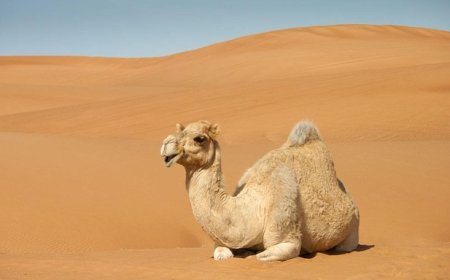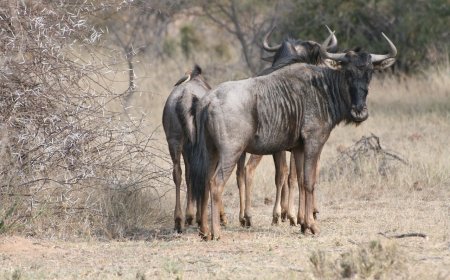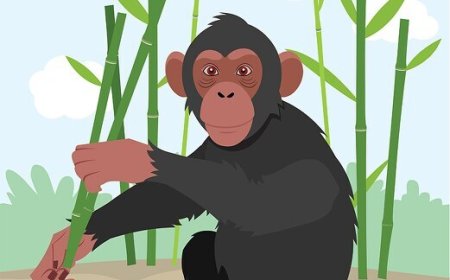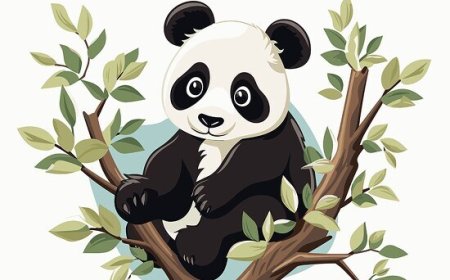What Are Mammals? | Full Guide for Students on Characteristics, Behavior, and Species
Explore the fascinating world of mammals—warm-blooded animals with hair, milk, and complex behavior. Learn how they live, adapt, reproduce, and thrive in every environment. Includes vocabulary, quiz, and student-friendly summary.
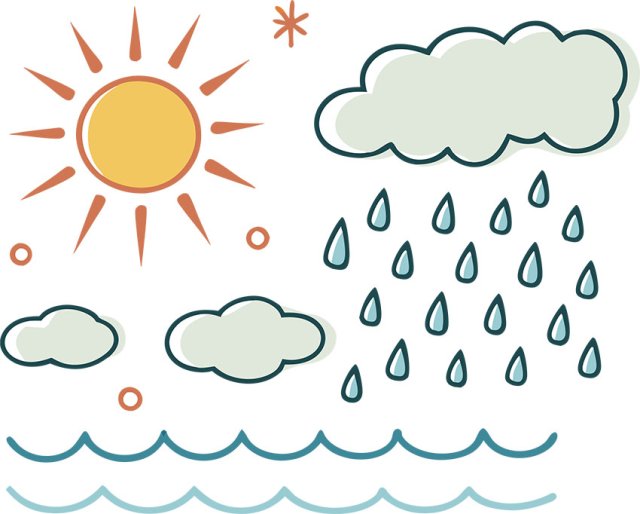
🧭 Introduction
Mammals are some of the most diverse and advanced animals on Earth. They include over 6,000 species, ranging from the tiny bumblebee bat to the giant blue whale. Mammals live in almost every environment on the planet—from freezing Arctic tundra to sunny deserts, from deep oceans to dense rainforests. What makes mammals different from other animals is a set of special characteristics: they are warm-blooded, have backbones, grow hair or fur, and the females produce milk to feed their young. Humans are mammals too, so learning about them is also learning about ourselves.
🧬 What Makes an Animal a Mammal?
To be considered a mammal, an animal must have certain biological traits. One of the most important is that female mammals have mammary glands, which produce milk to feed their babies. This provides young mammals with the nutrition they need to grow strong and survive.
Another key trait is that mammals are warm-blooded, or endothermic. This means they can regulate their body temperature, unlike cold-blooded animals like reptiles or amphibians, which depend on the sun or external heat. This trait allows mammals to live in both very hot and very cold environments.
Mammals also have hair or fur at some point in their lives. While some species, like whales or dolphins, have only tiny hair as infants, all mammals have some kind of hair. Hair helps with temperature control, camouflage, and protection.
Other common features include:
- Live birth in most species
- Three middle ear bones for hearing
- Lungs for breathing air
- Complex brains capable of advanced learning and emotion
🌍 Where Do Mammals Live?
Mammals are incredibly adaptable, which is why they can live almost anywhere on Earth. From the icy waters of Antarctica, where seals and whales thrive, to the dry deserts of Africa and the Middle East, where camels and foxes survive harsh heat, mammals have evolved to suit nearly every habitat.
Some mammals prefer the treetops, like monkeys and sloths. Others dig underground, like moles and wombats. Many live in grasslands and forests, such as deer, bears, and squirrels. Marine mammals like dolphins, whales, and manatees spend their lives in oceans and rivers. Urban mammals—like raccoons, rats, and even house cats—have adapted to living around people.
These environments shape how mammals look, behave, and survive. For example, Arctic mammals like polar bears and arctic foxes have thick fur and layers of fat to keep warm. Desert mammals have large ears to release heat and survive with very little water.
🍽 What Do Mammals Eat?
Mammals eat a wide variety of foods, and their teeth and digestive systems are adapted to their diets. The three main diet groups are:
Herbivores eat only plants. Animals like horses, elephants, giraffes, and cows have flat teeth for grinding leaves, grass, or bark. They often have large stomachs or special bacteria to help break down tough plant material.
Carnivores eat only meat. Mammals such as lions, wolves, orcas, and tigers have sharp canines and strong jaws to catch and eat prey. They’re often fast, stealthy hunters.
Omnivores eat both plants and meat. Humans, bears, raccoons, and pigs fall into this group. Their teeth are a mix of flat and pointed types, making them good at eating many different foods.
Some mammals have very specialized diets. For example, anteaters eat only ants and termites, while koalas feed almost entirely on eucalyptus leaves.
👪 Reproduction and Raising Young
Mammals are known for strong parental care, especially from mothers. Unlike reptiles or amphibians that often leave their eggs behind, mammals usually care for their young after birth.
There are three types of reproduction in mammals:
Placental mammals, the most common group, carry their babies inside the body until they are well developed. Examples: humans, cats, whales.
Marsupials give birth to tiny, undeveloped babies that continue growing in a pouch. Examples: kangaroos, opossums, koalas.
Monotremes, like the platypus and echidna, lay eggs but still produce milk for their young.
Most mammals have a strong bond with their young. Mothers may nurse, groom, protect, and teach their babies how to find food or avoid danger. This is one reason mammals often have long childhoods compared to other animals.
🧠 Behavior and Intelligence
Mammals show a wide range of behaviors, and many are considered some of the smartest animals on Earth. They can solve problems, communicate, play, and work together.
For example:
- Elephants can recognize themselves in mirrors, a sign of self-awareness.
- Dolphins use sounds to talk to each other and even give names to other dolphins.
- Chimpanzees use tools to get insects or crack nuts.
- Dogs can learn commands and understand human emotions.
Social mammals like wolves, meerkats, and humans live in groups, cooperate to find food, and protect each other. Even solitary mammals like tigers or bears show intelligence in hunting and raising young.
🦴 Mammal Adaptations for Survival
Mammals have evolved many amazing adaptations to survive in different environments. These include:
- Thick fur or blubber for insulation in cold climates
- Colorful or camouflaged coats for blending in
- Sharp claws or teeth for hunting or defense
- Large ears (like those of a fennec fox) to release body heat
- Webbed feet and waterproof fur for swimming in species like otters and beavers
- Wings in bats—the only flying mammals!
Adaptations help mammals survive extreme temperatures, escape predators, and find food and mates.
🚨 Conservation and Threats
Sadly, many mammals are in danger due to human activity. The biggest threats include:
- Habitat loss from farming, roads, and cities
- Climate change, which alters food and migration patterns
- Poaching and illegal wildlife trade, especially for tusks, fur, or pets
- Pollution, like plastic in oceans that harms marine mammals
- Invasive species that disrupt native ecosystems
Some endangered mammals include the black rhino, orangutan, vaquita, pangolin, and snow leopard. Conservation groups work hard to protect them through national parks, anti-poaching efforts, breeding programs, and education.
🏛 Cultural and Scientific Importance
Mammals have always played an important role in human culture and science. They appear in mythology, religion, art, and literature. Many societies have relied on mammals for food, clothing, transportation, and companionship.
In science, mammals are often studied for medical research, environmental health, and understanding evolution. Famous mammals like Dolly the sheep (the first cloned animal) or Jane Goodall’s chimpanzees have helped us learn more about genetics, intelligence, and conservation.
List of Mammals
🐘 Land MammalsLarge Herbivores 🦁 Large Carnivores
🦡 Medium & Small Mammals
|
🐿️ Rodents and Small Mammals Squirrel 🐇 Hoppers & Lagomorphs 🐵 Primates
|
🐬 Marine Mammals Whales & Dolphins Seals & Others Flying Mammals 🐄 Domesticated Mammals
|
📚 Vocabulary Words
Mammary glands Organs in female mammals that produce milk for feeding young
Warm-blooded Able to control and maintain a steady body temperature
Marsupial A mammal whose young develop in a pouch
Monotreme An egg-laying mammal
Adaptation A feature that helps an animal survive in its environment
💡 Interesting Facts About Mammals
- Blue whales are the largest animals to ever live, even bigger than dinosaurs.
- Bats are the only mammals capable of true flight.
- Platypuses are one of only five mammals that lay eggs.
- The human brain is the most complex among all mammals.
- Elephants have the longest pregnancy of any mammal—almost 2 years!
👧 Kid-Friendly Summary
Mammals are warm-blooded animals that have hair and feed milk to their babies. They live all over the world—from cold mountains to deep oceans. Some are tiny like mice, while others, like whales, are gigantic! Mammals can be super smart, fast, strong, and even funny. Whether they fly like bats or swim like dolphins, mammals are amazing and important creatures that we should learn about—and protect!
✅ Interactive Quiz
Q1: What is one trait all mammals have?
A. Feathers
B. Milk-producing glands ✅
C. Scales
D. Gills
Q2: What kind of mammal lays eggs?
A. Placental
B. Marsupial
C. Monotreme ✅
D. Amphibian
Q3: What do herbivores eat?
A. Only meat
B. Only plants ✅
C. Fish
D. Insects
Q4: Where do most marine mammals live?
A. Deserts
B. Grasslands
C. Oceans ✅
D. Jungles
Q5: What makes mammals different from birds and reptiles?
A. They fly
B. They have wings
C. They have mammary glands and hair ✅
D. They lay lots of eggs
Scoring:
5/5 = ⭐ Mammal Master
3–4 = 👍 Great Work
1–2 = 📘 Review and Try Again
What Are Mammals?
Mammals are a group of vertebrates, meaning they have backbones. They are also warm-blooded, which means they can keep their body temperature steady no matter the weather outside. This allows them to live in a wide range of climates, from frozen tundras to hot deserts.
All mammals share a few key features:
-
Hair or fur on their bodies (even whales have some hair!)
-
Mammary glands, which allow mothers to produce milk to feed their babies
-
Live births (in most species), rather than laying eggs
-
Lungs for breathing
-
A four-chambered heart
These features help scientists tell mammals apart from other animals like reptiles, birds, and amphibians.
Types of Mammals
There are about 6,500 species of mammals alive today. Scientists group them into three main types based on how they give birth and care for their young:
1. Placental Mammals
This is the largest group of mammals, including humans, dogs, cats, whales, and elephants. Placental mammals grow their babies inside the mother’s body using a special organ called the placenta, which gives the baby food and oxygen.
2. Marsupials
Marsupials give birth to tiny, underdeveloped babies that crawl into a pouch on the mother’s belly to finish growing. Examples include:
-
Kangaroos
-
Koalas
-
Opossums
-
Wallabies
3. Monotremes
Monotremes are the only mammals that lay eggs. There are just a few living species, including:
-
The platypus
-
Two kinds of echidnas (spiny anteaters)
Even though they lay eggs, monotremes still produce milk and have fur.
Mammal Anatomy and Adaptations
Mammals are adapted to many environments. Some live in oceans, others in trees, underground, or high mountains. They have many amazing body features that help them survive.
Fur and Hair
All mammals have hair or fur at some point in their lives. Fur helps with:
-
Warmth
-
Camouflage (blending in)
-
Communication (like when a cat puffs up its fur)
Whales and dolphins have very little hair, but it's still there!
Teeth
Mammals have different types of teeth, like:
-
Incisors for cutting
-
Canines for tearing
-
Molars for grinding
This helps them eat a variety of foods. Herbivores, carnivores, and omnivores all have different tooth shapes.
Brains and Senses
Mammals have larger brains compared to other animals their size. They are known for:
-
Learning and memory
-
Solving problems
-
Strong senses like smell, hearing, and sight
Dolphins, chimpanzees, elephants, and humans are some of the smartest animals on Earth.
How Mammals Reproduce
Most mammals give birth to live young and care for them after birth. Baby mammals drink mother’s milk, which gives them the nutrients they need to grow strong. This bond between mother and baby is one of the key traits of mammals.
In marsupials, the baby stays in a pouch after being born. In monotremes, the mother lays eggs but still feeds her babies milk after they hatch.
Where Mammals Live
Mammals live in nearly every environment on Earth, including:
-
Forests – like monkeys and deer
-
Deserts – like camels and kangaroo rats
-
Oceans – like whales, seals, and sea otters
-
Mountains – like snow leopards and mountain goats
-
Underground – like moles and naked mole-rats
-
Cities – like rats, squirrels, raccoons, and humans!
They have adapted in many ways: bats fly, dolphins swim, and gibbons swing through trees.
What Mammals Eat
Mammals can be:
-
Herbivores – plant eaters (cows, giraffes, elephants)
-
Carnivores – meat eaters (lions, wolves, orcas)
-
Omnivores – eat both plants and animals (bears, raccoons, humans)
Their teeth, stomachs, and hunting or gathering skills are adapted to their diet.
Mammals and the Environment
Mammals play important roles in ecosystems:
Seed Spreaders
Fruit-eating mammals like bats and monkeys spread seeds through their droppings, helping plants grow in new places.
Predators and Prey
Carnivores help control other animal populations, while herbivores keep plant growth in check.
Pollinators
Some mammals, like bats and small primates, help pollinate flowers while feeding on nectar.
Mammals and People
Humans are mammals too! We share many features with other mammals, such as warm-blooded bodies, fur (even if it’s not much), and the way we care for our babies.
Other mammals have been important to people for thousands of years. They provide:
-
Companionship – pets like cats and dogs
-
Food – cows, pigs, goats, sheep
-
Clothing – wool from sheep, leather from cows
-
Work – horses, oxen, and camels for transportation
-
Scientific research – studying mammals helps us understand health and diseases
However, human activities have also harmed many mammals.
Endangered Mammals
Many mammals today are threatened or endangered. Reasons include:
-
Habitat loss from farming and cities
-
Hunting and poaching
-
Pollution
-
Climate change
Animals like tigers, rhinos, and some whales are in danger of extinction. Conservation groups work hard to protect these species with breeding programs, nature preserves, and environmental laws.
Amazing Mammal Abilities
Mammals can do some pretty incredible things:
-
Bats are the only mammals that can truly fly.
-
Whales hold their breath for over an hour while diving deep into the ocean.
-
Elephants use their trunks for drinking, grabbing, and even hugging!
-
Dolphins use echolocation to “see” with sound underwater.
-
Polar bears have black skin under their white fur to absorb sunlight and stay warm.
-
Sloths move so slowly that algae grows on their fur, helping them blend into the trees.
How to Help Mammals
You can make a difference! Here’s how:
-
Protect natural areas by supporting parks and preserves
-
Recycle and reduce pollution to keep environments clean
-
Avoid products made from endangered animals
-
Learn and share facts about mammals with friends and family
-
Support wildlife organizations that help rescue and protect mammals
Fun Mammal Facts
-
The blue whale is the largest animal that has ever lived—it can be over 100 feet long!
-
Bats make up about 20% of all mammal species.
-
A baby kangaroo is called a joey and is only the size of a jellybean when born.
-
Otters hold hands while sleeping in the water so they don’t float away.
-
Humpback whales sing songs that can last for hours.
-
The platypus lays eggs, has a bill like a duck, and produces venom—one of the strangest mammals!
-
Elephants mourn their dead and have strong family bonds.
-
The Arctic fox’s fur changes color—white in winter, brown in summer.
-
Sloths can hold their breath longer than dolphins, up to 40 minutes!
-
Tigers have striped skin, not just striped fur!
Conclusion
Mammals are one of the most diverse and fascinating groups of animals on Earth. Whether they swing through the trees, burrow underground, or leap across the plains, mammals show how life can adapt in amazing ways. They teach us about care, survival, and the importance of protecting nature. As fellow mammals, it’s up to us to make sure their future is safe and wild.
SEO Keywords:
Mammals for kids, types of mammals, mammal facts, what makes a mammal, mammal adaptations, warm-blooded animals, placental mammals, marsupials and monotremes, mammal life cycle, mammal conservation


















































